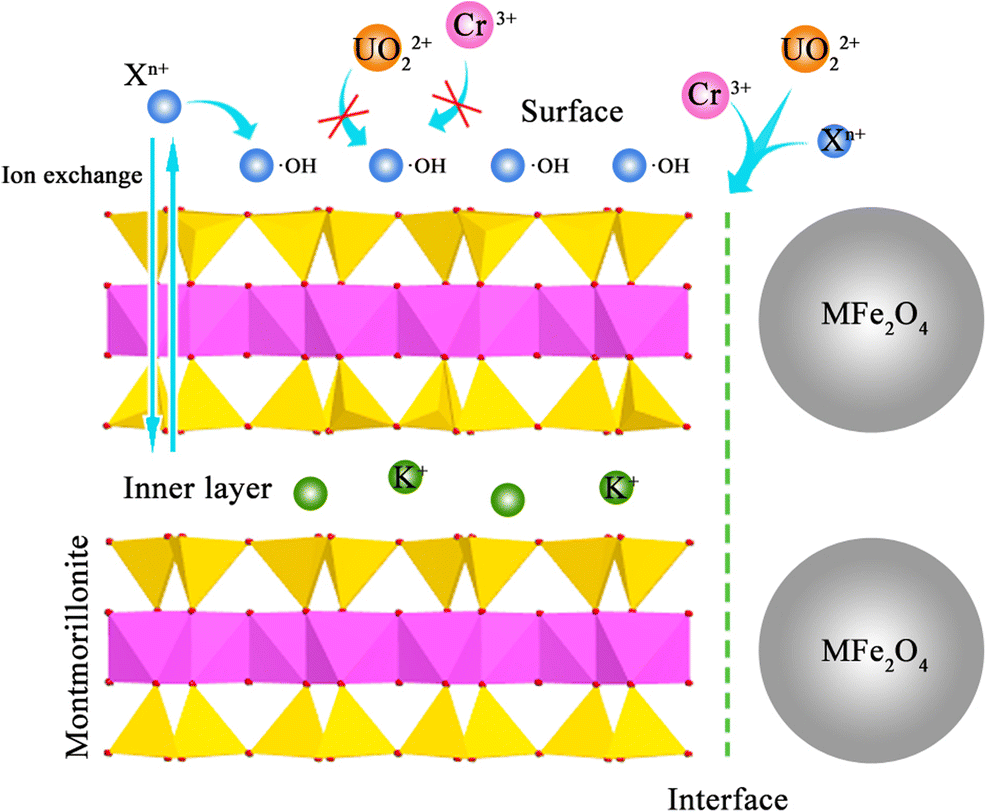91 results
G - Strategist Should Manage the Interfaces
-
- Book:
- Three Faces of Sun Tzu
- Published online:
- 07 March 2024
- Print publication:
- 15 February 2024, pp 423-490
-
- Chapter
- Export citation
G - Strategist Should Manage the Interfaces
-
- Book:
- Three Faces of Sun Tzu
- Published online:
- 07 March 2024
- Print publication:
- 15 February 2024, pp 423-490
-
- Chapter
- Export citation
Competitive Adsorption of Uranyl and Toxic Trace Metal Ions at MFe2O4-montmorillonite (M = Mn, Fe, Zn, Co, or Ni) Interfaces
-
- Journal:
- Clays and Clay Minerals / Volume 67 / Issue 4 / August 2019
- Published online by Cambridge University Press:
- 01 January 2024, pp. 291-305
-
- Article
- Export citation
Interaction of Corroding Iron with Bentonite in the ABM1 Experiment at Äspö, Sweden: A Microscopic Approach
-
- Journal:
- Clays and Clay Minerals / Volume 63 / Issue 1 / February 2015
- Published online by Cambridge University Press:
- 01 January 2024, pp. 51-68
-
- Article
- Export citation
On the exponential growth rates of lattice animals and interfaces
- Part of
-
- Journal:
- Combinatorics, Probability and Computing / Volume 32 / Issue 6 / November 2023
- Published online by Cambridge University Press:
- 31 July 2023, pp. 912-955
-
- Article
-
- You have access
- Open access
- HTML
- Export citation
1 - Introduction
-
- Book:
- Regulating Access and Transfer of Data
- Published online:
- 06 April 2023
- Print publication:
- 13 April 2023, pp 1-5
-
- Chapter
- Export citation
3 - Sensory Transnationalism and Interfaces
- from Part II - Responses and Restitutions
-
- Book:
- Sensory Anthropology
- Published online:
- 02 March 2023
- Print publication:
- 09 March 2023, pp 79-104
-
- Chapter
- Export citation
15 - Tonal Processes Conditioned by Morphosyntax
- from Part Three - Phonetic-phonological Issues in Chinese
-
-
- Book:
- The Cambridge Handbook of Chinese Linguistics
- Published online:
- 04 August 2022
- Print publication:
- 18 August 2022, pp 313-335
-
- Chapter
- Export citation
10 - Phonological and Morphological Conditioning
- from Part Three - Morphology
-
-
- Book:
- The Cambridge Handbook of Romance Linguistics
- Published online:
- 23 June 2022
- Print publication:
- 07 July 2022, pp 321-345
-
- Chapter
- Export citation
Chapter 1 - An Interface Theory of Universal Grammar and Iconicity
-
- Book:
- Universal Grammar and Iconicity
- Published online:
- 03 February 2022
- Print publication:
- 03 February 2022, pp 1-16
-
- Chapter
- Export citation
27 - The Phonetics/Phonology Interface
- from Section V - Applications of Phonetics
-
-
- Book:
- The Cambridge Handbook of Phonetics
- Published online:
- 11 November 2021
- Print publication:
- 02 December 2021, pp 682-706
-
- Chapter
- Export citation
A Detailed Interface Characterization of the Explosively Welded Three-Layered Ti Gr 1/Alloy 400/1.4462 Steel Clads Before and After Heat Treatment
-
- Journal:
- Microscopy and Microanalysis / Volume 28 / Issue 3 / June 2022
- Published online by Cambridge University Press:
- 24 November 2021, pp. 915-923
- Print publication:
- June 2022
-
- Article
- Export citation
7 - Final Considerations
-
- Book:
- Interfaces and Domains of Contact-Driven Restructuring
- Published online:
- 21 October 2021
- Print publication:
- 04 November 2021, pp 140-144
-
- Chapter
- Export citation
The interface between paediatrics and camhs (child and adolescent psychiatry): Mental state examination teaching for paediatric trainees
-
- Journal:
- European Psychiatry / Volume 64 / Issue S1 / April 2021
- Published online by Cambridge University Press:
- 13 August 2021, p. S224
-
- Article
-
- You have access
- Open access
- Export citation
4 - Corporeal Resistance and Aesthetics of the Interface
-
- Book:
- Art and the Arab Spring
- Published online:
- 07 July 2021
- Print publication:
- 08 July 2021, pp 166-221
-
- Chapter
- Export citation
MODELLING OF WITHDRAWAL OF A STRATIFIED FLUID FROM A POROUS MEDIUM
- Part of
-
- Journal:
- Bulletin of the Australian Mathematical Society / Volume 104 / Issue 2 / October 2021
- Published online by Cambridge University Press:
- 12 April 2021, pp. 349-350
- Print publication:
- October 2021
-
- Article
-
- You have access
- Export citation
3 - Dual Citizenship and Its Discontents in Africa
-
- Book:
- Development, (Dual) Citizenship and Its Discontents in Africa
- Published online:
- 07 January 2021
- Print publication:
- 07 January 2021, pp 84-109
-
- Chapter
- Export citation
1 - Methodological, Theoretical, and Biographical Reflections
-
- Book:
- Development, (Dual) Citizenship and Its Discontents in Africa
- Published online:
- 07 January 2021
- Print publication:
- 07 January 2021, pp 22-49
-
- Chapter
- Export citation
In situ fracture observations of distinct interface types within a fully lamellar intermetallic TiAl alloy
-
- Journal:
- Journal of Materials Research , First View
- Published online by Cambridge University Press:
- 11 November 2020, pp. 1-14
-
- Article
-
- You have access
- Open access
- HTML
- Export citation
Interface effects on the properties of Cu–Nb nanolayered composites
-
- Journal:
- Journal of Materials Research / Volume 35 / Issue 20 / 28 October 2020
- Published online by Cambridge University Press:
- 07 October 2020, pp. 2684-2700
- Print publication:
- 28 October 2020
-
- Article
- Export citation










